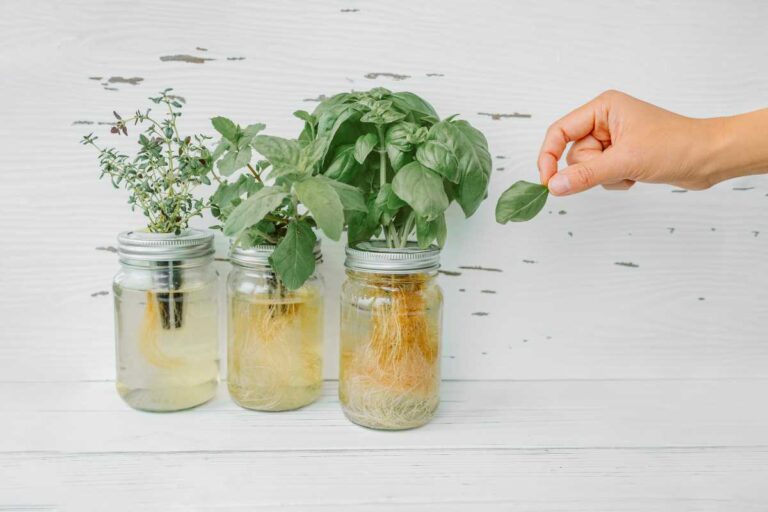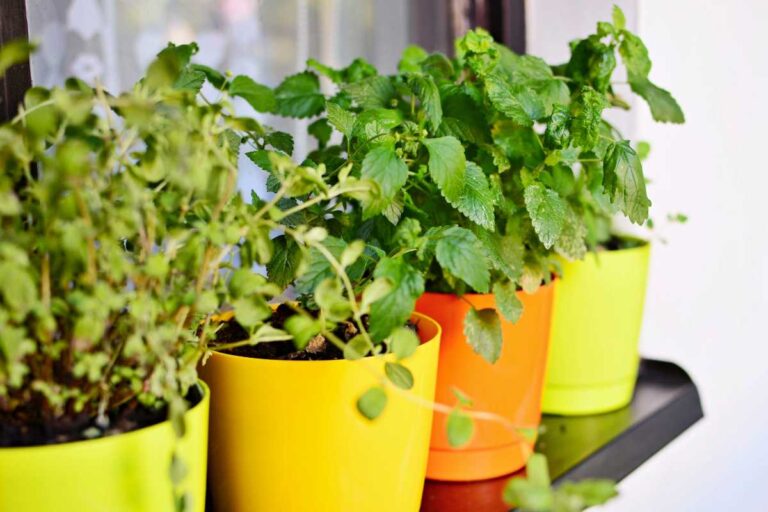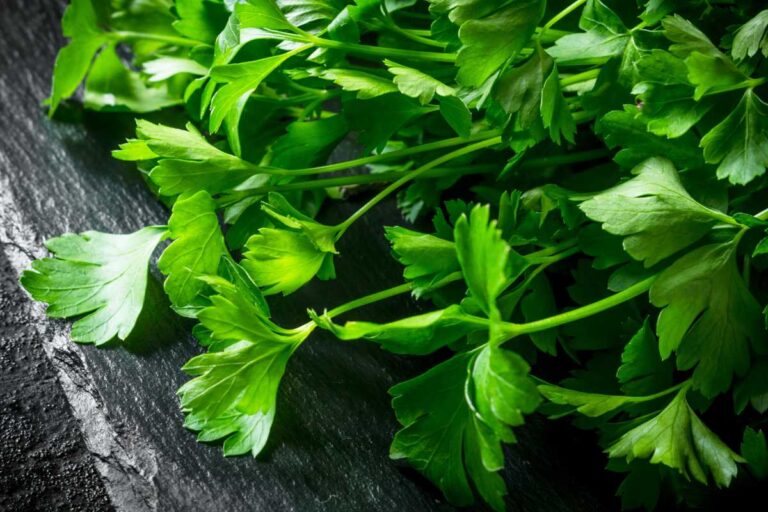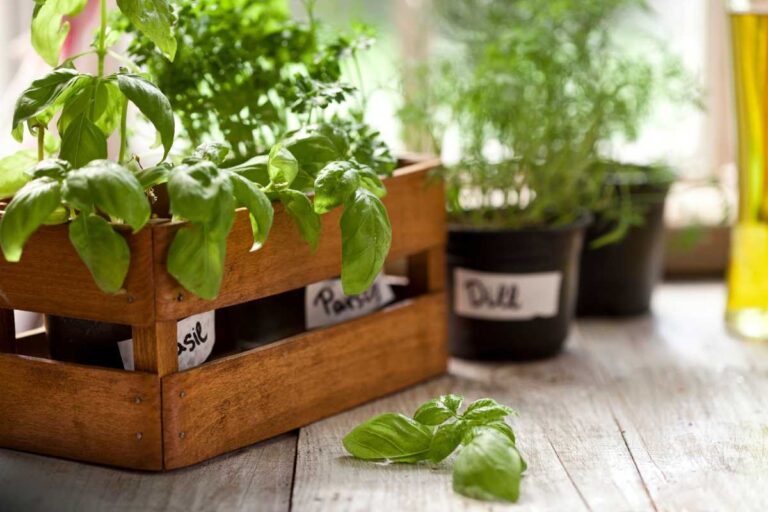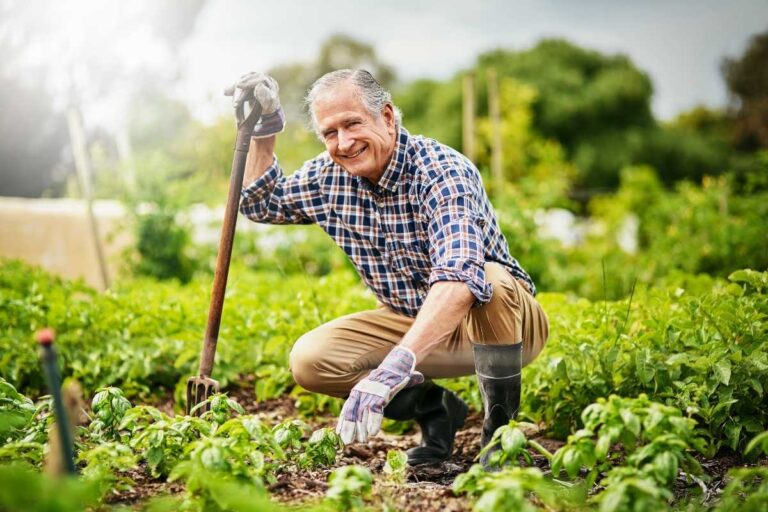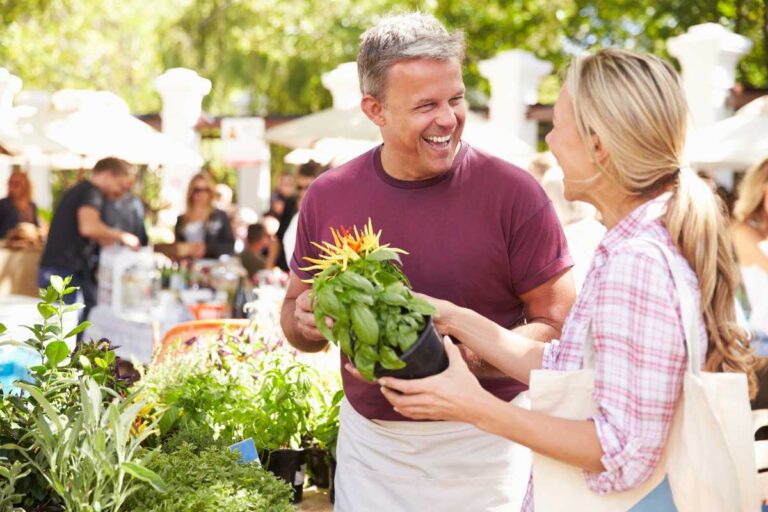Best Pots for Indoor Vegetable Growing: A Beginner’s Guide
Best Pots for Indoor Vegetable Growing: A Beginner’s Guide
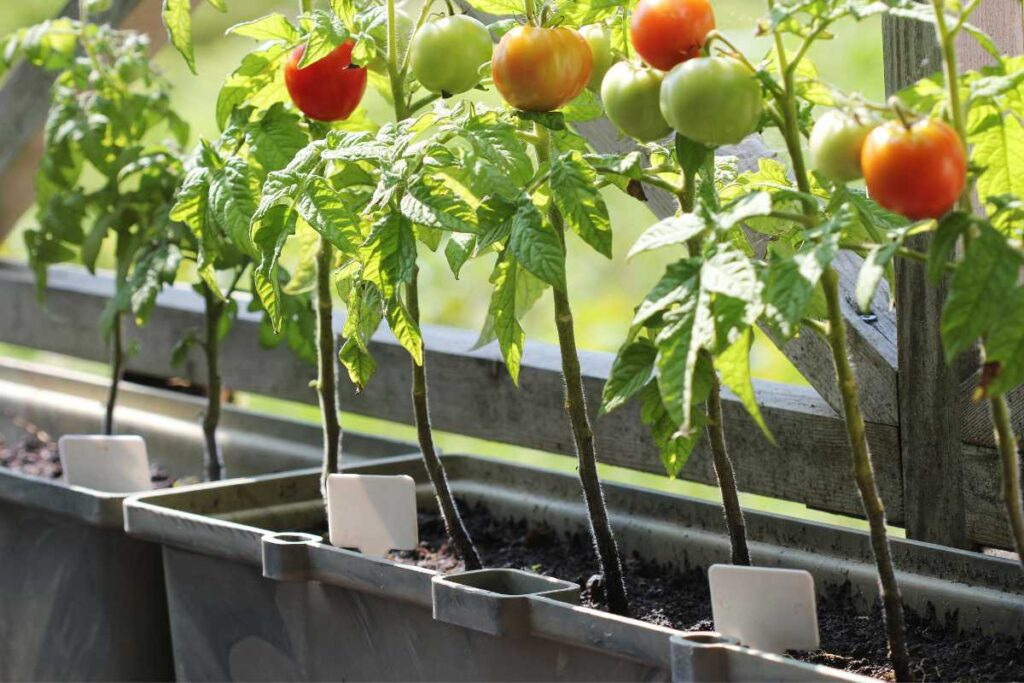
Indoor vegetable gardening has gained immense popularity among beginners and seasoned gardeners alike. The ability to grow fresh vegetables year-round, regardless of outdoor conditions, is a significant advantage. However, choosing the right pots for your indoor garden is crucial to ensure optimal plant growth and yield.
Selecting the appropriate pots can greatly impact the health and development of your plants’ root systems. Smart pots, specifically designed for indoor gardening, offer several benefits such as improved drainage, air circulation, and temperature regulation. These factors contribute to healthier plants with stronger root systems.
When considering pot options for your indoor vegetable garden, it’s essential to evaluate key factors like size, material, and drainage capabilities. Properly sized pots allow ample space for root expansion and prevent overcrowding. Opting for materials that provide insulation while allowing breathability ensures a favorable environment for vibrant plant growth.
By paying attention to pot selection in your indoor vegetable garden endeavors, you can enhance the overall success of your growing efforts. With smart choices in pots tailored to your specific needs—whether you’re cultivating pole beans or other vegetables—you’re on track towards a thriving indoor garden.
Tired of struggling with outdoor herb gardens in unpredictable weather? Discover the secret to successful herbal gardening indoors and enjoy fresh herbs year-round. Check out our article now!
Container Sizes for Vegetable Crops
To successfully grow vegetables in containers, it’s crucial to understand the relationship between container size and plant growth. Different vegetable crops have varying requirements, so choosing the right container size is essential for their overall health and productivity.
Understanding the Relationship between Container Size and Plant Growth
The size of the container directly impacts the growth of your vegetable plants. A larger container provides more space for roots to spread out and access nutrients, resulting in healthier and more productive plants. On the other hand, a smaller container restricts root growth, leading to stunted plants with limited access to water and nutrients.
Recommended Container Sizes for Different Vegetable Crops
There isn’t a one-size-fits-all approach. The ideal container size depends on the specific vegetable variety you’re growing. Here are some general recommendations:
- Leafy Greens (such as lettuce or spinach): These crops have shallow root systems and can thrive in smaller containers like 6-8 inch pots or even window boxes.
- Tomatoes: Tomatoes require larger containers due to their extensive root systems. Opt for containers that are at least 10-15 gallons in size.
- Peppers: Similar to tomatoes, peppers also need ample space for their roots to grow. Choose containers with a minimum volume of 5 gallons.
- Root Vegetables (like carrots or radishes): These crops require deeper pots to accommodate their long taproots. Look for containers that are at least 12 inches deep.
- Squash and Cucumbers: These vining vegetables need plenty of room both above and below ground. Select containers with a capacity of at least 5 gallons.
Factors to Consider when Determining Container Size
While recommended sizes provide a starting point, several factors should be considered when determining the appropriate container size:
- Plant Size: Consider how large the mature plant will grow and choose a container that can accommodate its size.
- Growth Habit: Some plants have spreading or vining habits, requiring more space for their growth.
- Climate: In hot climates, larger containers help insulate the roots and prevent them from overheating.
- Watering Frequency: Smaller containers dry out faster, necessitating more frequent watering.
Impact of Container Size on Water and Nutrient Requirements
Container size affects not only the physical space available to plants but also their water and nutrient requirements. Larger containers retain moisture for longer periods, reducing the frequency of watering needed. They provide a larger volume of soil that can hold more nutrients, resulting in healthier plants.
However, it’s essential to strike a balance as excessively large containers can lead to waterlogging and nutrient imbalances. It’s crucial to monitor your plants’ needs closely and adjust watering and fertilization accordingly.
Tips and Ideas for Indoor Container Gardening
Importance of Proper Drainage in Containers
Proper drainage is crucial. Without adequate drainage, excess water can accumulate in the soil, leading to root rot and other issues. To ensure your plants thrive, choose containers with drainage holes at the bottom. This allows excess water to escape, preventing waterlogged soil.
Pros:
- Prevents waterlogging and root rot
- Promotes healthy plant growth
- Reduces the risk of fungal diseases
Cons:
- Requires careful monitoring of watering frequency
- Can lead to water leakage if not placed on a saucer or tray
Choosing Suitable Potting Soil for Indoor Vegetable Gardening
Selecting the right potting soil is essential for successful indoor vegetable gardening. Opt for a high-quality, well-draining soilless mix specifically formulated for container gardening. These mixes are lightweight, sterile, and provide excellent moisture retention while allowing proper airflow to the roots.
Pros:
- Provides optimal nutrients for plant growth
- Ensures good drainage and aeration
- Reduces the risk of pests and diseases
Cons:
- May be more expensive than regular garden soil
- Requires additional fertilization as nutrients deplete over time
Utilizing Vertical Space with Trellises or Stakes
Indoor gardening often comes with limited space. To maximize your growing area, consider utilizing vertical space by using trellises or stakes. This technique is particularly useful when growing climbing plants such as tomatoes, cucumbers, or beans. By training these plants to grow upwards along supports, you can save valuable floor space while still enjoying a bountiful harvest.
Pros:
- Increases yield per square foot of garden space
- Enhances air circulation around plants
- Makes harvesting easier and more efficient
Cons:
- Requires regular pruning and tying up of plants
- May require additional support structures or materials
Maximizing Sunlight Exposure through Strategic Placement
Sunlight is vital for the growth and development of indoor vegetable plants. When positioning your containers, choose a location that receives ample sunlight throughout the day. South-facing windows are usually ideal as they provide the most direct sunlight. However, if natural light is limited, you can supplement it with artificial grow lights to ensure your plants receive adequate light for photosynthesis.
Pros:
- Promotes healthy plant growth and fruit production
- Enhances color, flavor, and nutritional content of vegetables
- Helps prevent leggy growth and weak stems
Cons:
- Limited availability of sunny spots indoors
- Additional cost for purchasing grow lights if needed
Incorporating these tips into your indoor container gardening routine will help you create a thriving garden inside your home. Remember to provide proper drainage, choose suitable potting soil, utilize vertical space effectively, and maximize sunlight exposure for optimal results. With a little care and attention, you can enjoy fresh vegetables grown right in the comfort of your own home.
Choosing the Right Containers for Successful Vegetable Growing
Indoor vegetable gardening is a fantastic way to enjoy fresh, homegrown produce all year round. ButYou have plenty of options to choose from. Each type of container has its own pros and cons, so let’s dive in and explore the different choices available.
Plastic Containers: Lightweight and Durable
Plastic containers are a popular choice for indoor vegetable gardening. They are lightweight, making them easy to move around if needed. Plastic pots also tend to be more durable than other materials, which means they can withstand the wear and tear of regular watering and handling. However, keep in mind that plastic containers may not be as aesthetically pleasing as ceramic or fabric options.
Pros:
- Lightweight and easy to move
- Durable and long-lasting
- Affordable compared to other materials
Cons:
- May not offer the same aesthetic appeal as ceramic or fabric containers
Ceramic Pots: Stylish but Heavy
If aesthetics are a top priority for you, ceramic pots might be the perfect choice for your indoor vegetable garden. These pots come in various colors, shapes, and designs that can add a touch of style to any space. However, it’s important to note that ceramic pots tend to be heavier than plastic or fabric containers. This weight can make them more challenging to move around or rearrange.
Pros:
- Stylish and visually appealing
- Available in various colors and designs
Cons:
- Heavier than other container types
- More expensive compared to plastic options
Fabric Grow Bags: Versatile and Breathable
Fabric grow bags are gaining popularity among indoor gardeners due to their versatility and breathability. These bags allow air circulation around plant roots while preventing waterlogging. They are especially suitable for growing leafy greens like spinach or salad greens. However, keep in mind that fabric containers may not be as durable as plastic or ceramic options.
Pros:
- Lightweight and easy to store
- Excellent air circulation for healthy root growth
- Ideal for growing leafy greens
Cons:
- Less durable compared to plastic or ceramic pots
Factors to Consider When Selecting Containers
When choosing the right containers for your indoor vegetable garden, there are a few factors you should consider:
- Durability: Consider the longevity of the container and how well it will hold up over time.
- Weight: Think about whether you’ll need to move the containers frequently and choose a material that suits your needs.
- Aesthetics: Decide if the appearance of the container is important to you and select one that complements your indoor space.
- Size: Match the size of the container with the specific needs of your plants and the available space in your home.
By carefully considering these factors, you can ensure that you choose the best pots for indoor vegetable growing.
Pot Selection: Glazed Ceramic vs. Fiberclay Options
Two popular options are glazed ceramic pots and fiberclay pots. Each type has its own advantages and disadvantages, so it’s important to consider your specific needs and preferences before making a decision.
Advantages and Disadvantages of Glazed Ceramic Pots
Glazed ceramic pots offer several benefits for indoor vegetable growing. Here are some advantages:
- Durability: Glazed ceramic pots are known for their durability, which means they can last for many years without cracking or breaking.
- Aesthetics: These pots come in a variety of colors and designs, adding a touch of elegance to your indoor garden.
- Moisture Retention: The glaze on the ceramic surface helps retain moisture in the soil, ensuring that your vegetables receive adequate hydration.
- Temperature Regulation: Ceramic pots provide insulation against extreme temperatures, protecting the roots of your plants from heat or cold.
However, there are also some drawbacks to using glazed ceramic pots:
- Weight: Ceramic pots can be quite heavy, especially when filled with soil and water. This can make them difficult to move around or rearrange in your indoor garden.
- Cost: Glazed ceramic pots tend to be more expensive compared to other options. If you’re on a tight budget, this may not be the most cost-effective choice.
Benefits and Drawbacks of Fiberclay Pots
Fiberclay pots have gained popularity among indoor gardeners due to their unique properties. Here are some advantages:
- Lightweight: Fiberclay is much lighter than traditional clay or ceramic materials, making it easier to handle and transport.
- Affordability: These pots are often more affordable than glazed ceramic ones, allowing you to purchase multiple containers without breaking the bank.
- Drainage: Fiberclay pots have excellent drainage properties, preventing waterlogged soil and promoting healthy root growth.
- Weather Resistance: Unlike ceramic pots, fiberclay containers are resistant to cracking in extreme weather conditions.
However, there are a few drawbacks to consider when using fiberclay pots:
- Durability: While fiberclay is generally durable, it may not be as long-lasting as glazed ceramic. Over time, the material can deteriorate or show signs of wear and tear.
- Limited Design Options: Fiberclay pots typically come in neutral colors and simple designs. If you’re looking for more decorative options, glazed ceramic might be a better choice.
Considerations When Choosing Between Glazed Ceramic and Fiberclay Options
When deciding between glazed ceramic and fiberclay pots for your indoor vegetable garden, it’s important to consider the following factors:
- Plant Watering Needs: If you’re growing vegetables that require consistent moisture levels, such as lettuce or herbs, glazed ceramic pots with their moisture retention properties may be suitable. For plants that prefer drier conditions like succulents or cacti, fiberclay pots with their excellent drainage would be a better choice.
- Aesthetic Preferences: Glazed ceramic pots offer a wider range of colors and designs compared to fiberclay. Consider the overall look you want to achieve in your indoor garden and choose accordingly.
- Durability: Glazed ceramic pots are more fragile and prone to cracking or chipping, while fiberclay pots are generally more durable and resistant to breakage.
- Weight: Glazed ceramic pots tend to be heavier than fiberclay pots, which may be a factor to consider if you plan to move or rearrange your plants frequently.
- Insulation: Glazed ceramic pots provide better insulation for plant roots, helping to protect them from extreme temperature fluctuations. Fiberclay pots, on the other hand, may not offer the same level of insulation.
- Environmental Impact: Fiberclay pots are typically made from a mixture of recycled materials, making them a more environmentally friendly option compared to glazed ceramic pots, which often require more energy and resources to produce.
- Maintenance: Glazed ceramic pots may require more frequent cleaning due to their smooth surface, while fiberclay pots are generally easier to clean and maintain.
- Price: Glazed ceramic pots tend to be more expensive than fiberclay pots, so your budget may play a role in your decision-making process.
Maximizing Space: Utilizing Hanging Baskets and Large Baskets
Indoor vegetable gardening is a fantastic way to grow your own fresh produce, even if you have limited space. One effective method of maximizing space is by utilizing hanging baskets and large baskets. These innovative containers offer several benefits and can be used to cultivate a variety of vegetables.
Benefits of using hanging baskets in indoor vegetable gardening
Hanging baskets are an excellent choice for indoor vegetable gardening because they allow you to make the most of vertical space. By suspending these baskets from hooks or brackets, you can free up valuable floor or countertop space. This is particularly beneficial for those with small apartments or kitchens.
Some advantages of using hanging baskets include:
- Maximizing sunlight exposure: Suspended from windows or placed near sunny spots, hanging baskets ensure that your vegetables receive ample sunlight for photosynthesis.
- Improving air circulation: The elevated position allows air to circulate freely around the plants, reducing the risk of diseases caused by stagnant air.
- Easy access for care and harvesting: Hanging baskets can be conveniently positioned at eye level, making it easier to water, prune, and harvest your vegetables without bending over.
Suitable vegetables for hanging baskets
Not all vegetables thrive in hanging baskets. It’s essential to choose varieties that are well-suited for this type of container gardening. Here are some suitable options:
- Cherry tomatoes: Compact varieties like ‘Tumbling Tom’ or ‘Tiny Tim’ work well in hanging baskets.
- Herbs: Basil, thyme, parsley, and chives can flourish in small hanging containers.
- Lettuce: Leafy greens such as lettuce and spinach grow beautifully in hanging baskets.
- Strawberries: Certain strawberry cultivars are perfect for cascading over the sides of a basket.
Tips for successful cultivation in hanging baskets
To ensure successful cultivation in hanging baskets, keep the following tips in mind:
- Choose the right container: Opt for baskets with proper drainage holes to prevent waterlogging.
- Select a suitable growing medium: Use lightweight potting soil or a mix specifically designed for containers.
- Provide adequate water and nutrients: Hanging baskets tend to dry out faster, so regular watering is crucial. Fertilize according to the specific needs of your vegetables.
- Rotate the basket: To ensure even growth and sunlight exposure, rotate the basket every few days.
Advantages of large baskets in maximizing root space
Large baskets are another excellent option for maximizing root space and promoting healthy plant growth. These spacious containers offer several advantages:
- Ample room for roots: Large baskets provide enough space for plants to develop a robust root system, which is essential for nutrient uptake.
- Reduced risk of overwatering: The increased soil volume helps maintain moisture levels more effectively, reducing the risk of overwatering.
- Ability to grow larger plants: Vegetables that require more space, such as peppers or eggplants, thrive in large baskets.
By utilizing hanging baskets and large baskets, you can make the most of your indoor vegetable garden while optimizing limited space. Whether you choose to suspend them from hooks or place them on sturdy surfaces near sunny windows, these innovative containers offer an efficient way to grow fresh produce right at home.
Stylish Options: Inch Gray Unglazed Cement Succulent Planter Pot
The inch gray unglazed cement succulent planter pot is a stylish option for indoor vegetable growing. It offers several features and benefits that make it a popular choice among gardeners.
Features and Benefits of Inch Gray Unglazed Cement Succulent Planter Pot
- Material: Made from high-quality unglazed cement, this pot provides excellent durability and sturdiness, ensuring long-lasting use.
- Aesthetics: The gray color of the pot adds a touch of elegance to any space. Its simple yet modern design complements various interior styles.
- Size: With an inch diameter, this pot is suitable for small to medium-sized plants, making it ideal for growing vegetables like lettuce or herbs.
- Drainage Holes: The bottom of the pot features multiple drainage holes that prevent waterlogging and promote healthy root growth.
Ideal Plants to Grow in This Type of Pot
The inch gray unglazed cement succulent planter pot is particularly well-suited for certain types of plants:
- Succulents: As the name suggests, this pot is perfect for growing succulents due to its excellent drainage properties. Succulents thrive in well-draining soil and require minimal watering.
- Herbs: Herbs like basil, parsley, or thyme can flourish in this pot as they prefer slightly drier conditions. The drainage holes ensure excess water doesn’t accumulate at the roots.
- Leafy Greens: Lettuce or spinach can be grown successfully in this type of pot as they don’t require deep soil and can tolerate moderate moisture levels.
Aesthetics Considerations When Using This Pot
When choosing the inch gray unglazed cement succulent planter pot for your indoor vegetable garden, consider the following aesthetic aspects:
- Colors Mix: The neutral gray color of the pot allows for versatile pairing with various plant colors and textures, creating visually appealing arrangements.
- Complementary Containers: Pairing this pot with other containers, such as wooden planter boxes or terra cotta pots, can add visual interest and create a harmonious display.
- Shapes and Sizes: Experimenting with different shapes and sizes of pots can create an eye-catching arrangement. Combining the inch gray unglazed cement succulent planter pot with taller or wider pots can add dimension to your indoor garden.
Tips for Maintaining Plants in Inch Gray Unglazed Cement Succulent Planter Pot
To ensure your plants thrive in the inch gray unglazed cement succulent planter pot, consider these maintenance tips:
- Proper Watering: While the drainage holes prevent waterlogging, it’s essential to monitor soil moisture levels regularly. Avoid overwatering by allowing the top layer of soil to dry out before watering again.
- Soil Composition: Use a well-draining soil mix specifically formulated for container gardening. A blend of compost, peat moss, and perlite or vermiculite provides adequate nutrients and drainage.
- Light Exposure: Place the pot in an area that receives sufficient sunlight based on the specific light requirements of your chosen plants. Most vegetables require at least 6 hours of direct sunlight daily.
- Supportive Structures
Finding the Perfect Pots for Your Indoor Vegetable Garden
We discussed container sizes for different vegetable crops and provided tips and ideas for successful indoor container gardening. We also delved into the choice between glazed ceramic and fiberclay pots, as well as the option of utilizing hanging baskets and large baskets to maximize space. Lastly, we introduced the stylish inch gray unglazed cement succulent planter pot as a potential option.
Now that you have a better understanding of the different aspects involved in selecting pots for your indoor vegetable garden, it’s time to put your knowledge into action. Consider the specific needs of your vegetable crops and choose containers that provide adequate space for growth. Remember to take advantage of vertical space with hanging baskets or large baskets if you have limited room. By carefully selecting the right pots, you can create an ideal environment for your indoor vegetables to thrive.
FAQs
What size pot should I use for my indoor vegetable garden?
For most small to medium-sized vegetables like herbs or lettuce, a pot with a diameter of 6-8 inches is sufficient. However, larger plants such as tomatoes or peppers will require pots with diameters ranging from 12-20 inches to accommodate their root systems adequately.
Can I reuse old pots for my indoor vegetable garden?
Yes, you can reuse old pots as long as they are clean and free from any diseases or pests. Make sure to wash them thoroughly with soap and water before planting new crops to prevent any potential contamination.
Should I use glazed ceramic or fiberclay pots?
Both glazed ceramic and fiberclay pots have their advantages. Glazed ceramic provides better insulation and retains moisture longer, while fiberclay offers excellent drainage properties. Consider the watering needs of your specific plants when choosing between these options.
Can I use plastic pots for my indoor vegetable garden?
Yes, plastic pots are a popular choice for indoor gardening due to their affordability and lightweight nature. Just ensure that the pots have drainage holes to prevent waterlogging.
How often should I water my indoor vegetable plants?
The frequency of watering will depend on various factors such as the type of plant, pot size, and environmental conditions. As a general guideline, check the moisture level in the soil regularly and water when the top inch feels dry to the touch. Avoid overwatering, as it can lead to root rot and other issues.
What is the best potting mix for indoor vegetable gardening?
A well-draining potting mix specifically formulated for vegetables is ideal. Look for mixes that contain a blend of peat moss, perlite or vermiculite, and compost to provide essential nutrients and good drainage.
Remember to consider these factors when selecting pots for your indoor vegetable garden and enjoy the satisfaction of growing your own fresh produce right at home!


